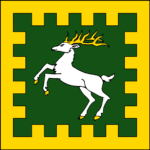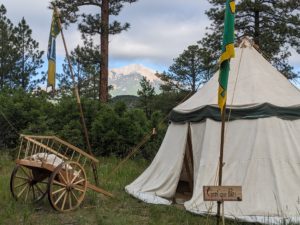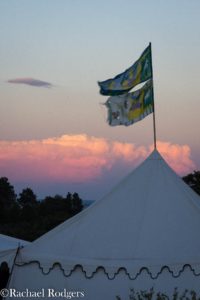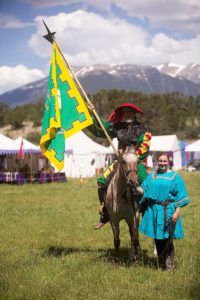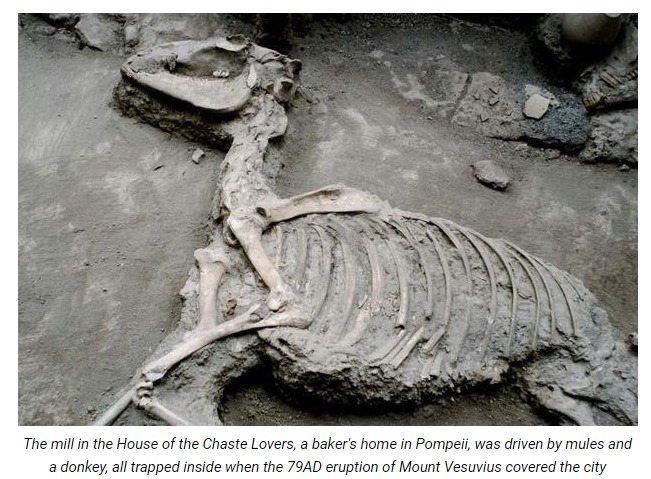Contributed by Meisterin Apollonia Zwamstricker
Pferde Friday!
Why? Pferde=the German word for “horse” and it makes a nice alliteration with Friday. But also to inspire, motivate, educate and drive research.
The concept behind my A&S challenge was to encourage artisans to make a connection between their art and an animal which contributed so much to civilization. This can be a direct connection or once, twice, three times removed, or even some convoluted web of intrigue, it doesn’t matter! The idea is to develop a better understanding of the historical context in which your craft existed and to build a better overall understanding of the world which we seek to recreate in the SCA.
That being said, and without further ado, I present my first entry for Pferde Friday! This first iteration was inspired by someone on Facebook expressing excitement for grinding their own flour. Well, my brain immediately jumped to one of the most famous archeological sites in the world; Pompeii. My brain makes leaps like that so bear with me here.
In Pompeii a mill was discovered and in this mill was found the skeletons of six mules and a donkey which died where they worked. These animals powered hourglass shaped grinding stones which made flour to feed the citizens of Pompeii.
The equine powered mill was invented by the Carthaginians in the 3rd century B.C.E and remained in use well into the 19thcentury (Some are still working today in certain Mennonite communities). That means this technology existed throughout the entirety of the SCA period! These mills were often used for grinding flour but could be used for anything; moving water, mashing apples or grain for fermentation, in the tin and silver mines of Spain, there was even one of these shown in Pirates of the Caribbean in the blacksmith shop so by all means use that as a launching pad for your research!
Now, you might ask, how does a bunch of dead mules relate to Arts and Sciences? Well I’m glad you asked! This is super exciting!
So, first of all we have this amazing technology which allowed us to feed large populations. This is amazing scientific advancement that leads to all kinds of possibilities across the centuries! But, we don’t have time to fully extrapolate on that here so for our purposes I will give some hypothetical examples and draw some connections with this singular archaeological example.
For a direct tie we have the mill itself which could be recreated, even as a smaller scale model. We have the harness which these animals would have worn when working at the mill. We have historical artwork depicting these mills in use. We have the site of the mill and the baker’s home where they were found, the fresco, the garden, what other artifacts and artwork were found there? These could all be direct connections.
One step removed would be the products made from the flour produced by the mules and donkey. Bread, the Roman precursor to pizza, any other Roman recipe using flour. These are all options for edible A&S. (Remember, this technology existed throughout our time period so….not just Roman bread, hint hint, wink wink. What other products were produced by these horse powered mills and how were they used?) Alternatively, we have the images of the mills being used, what context or media were these done in? Can that be recreated or perhaps an item or image connected to that? Can you do other art in the same style?
Take another step… What else was served with the bread? Cheese? Olives? What dishes or plates might they have been served on? Pottery? Glass? where else in Pompeii would these products have been served? The street restaurant that was found? One of the bars or inns? The villas? What sort of things were found in these sites?
And another step. The people themselves. Their portraits, their jewelry, their writings. These people lived and many died in Pompeii leaving us numerous things which could be recreated in form or method. A ring worn by a wealthy merchant, a fresco portrait of an educated lady. These people more than likely were consumers of that very basic commodity we started with. The mules ground the flour in the mill that was made into bread and served at the street restaurant in a clay bowl to the woman who was found wearing the gold bracelet.
What we are looking at is called social archeology. This is a discipline of archaeological study that focuses on the bigger picture, rather than the individual object or person, by attempting to put each of those things into context. In other words, it attempts to build a model of what a society may have been like by determining the roles of the individual artifacts found. Once that is accomplished, it is easier to see why a certain item may have been manufactured or used.
There you have it, that’s what I got this week. Please be advised this post does not serve as documentation and comes from the countless documentaries, articles and random Smithsonian Facebook posts I have clicked on. What this post is, in all actuality, is the entrance to a rabbit hole. So dive in and dig my historian friends! I hope many of you will pick up this gauntlet I have thrown down for the Kingdom A&S side-quest!
Til next week!
Meisterin Apollonia Zwamstricker
